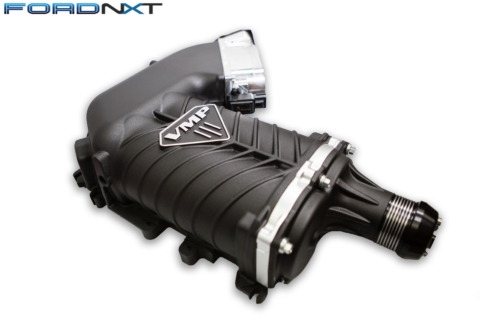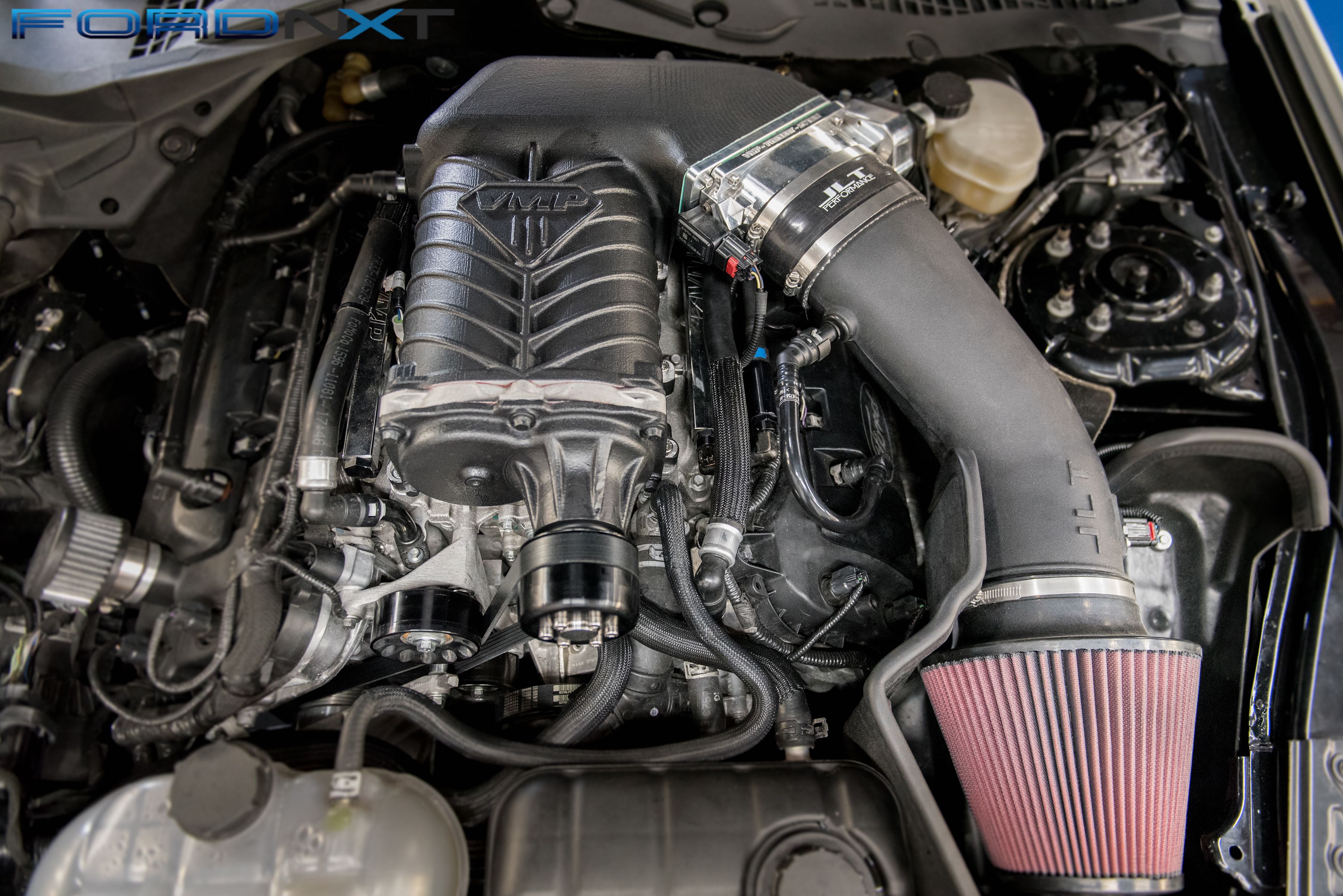In these amazing times, making huge power with bolt-on modifications is standard practice, but putting down four-digit numbers with a supercharger and a stock engine is still an incredible milestone, and that’s just what VMP Performance achieved with its new Gen3 TVS supercharger.
I’m blown away that we could to this with a stock Coyote engine. — Justin Starkey, VMP Performance
“Based on Eaton’s data, I knew the Gen3 would be a huge improvement over the Gen2R, but I’m blown away that we could to this with a stock Coyote engine,” VMP Performance president Justin Starkey enthused.

VMP Performance developed the latest in its series of Twin Vortices Series superchargers based on Eaton’s new 2650 rotor pack. The resulting Gen3 unit delivers next-level TVS performance. (Photo Credit: VMP Performance)
Regular readers will recall that the latest VMP TVS is a 2.65-liter Twin Vortices Series unit based on Eaton’s latest 2650 rotor pack. These rotors are built for more flow and greater efficiency, and VMP designed a blower case and inlet to maximize the efficiency of the 2650 design.
Our VMP Gen3 flows so much air we’re actually going to need to create larger pulleys for the stock-motor ’11-’14 Coyote cars. — Justin Starkey, VMP Performance
“The internet worries a lot about the displacement difference in Eaton’s old and new rotor packs. What we know from an engineering perspective is that the new rotors are larger and better at moving air,” Justin explained. “Eaton had over 10 years to perfect the TVS technology; the first 2300 rotors came out way back in 2007. The proof of that engineering is in dyno results like these. Our VMP Gen3 flows so much air we’re actually going to need to create larger pulleys for the stock-motor ’11-’14 Coyote cars, just to keep the power levels low enough for a stock engine.”
Pushing The Envelope
By simply adding the new supercharger to the stock Coyote engine under the hood of the company’s Track Attack 2017 Mustang GT SEMA project and filling the tank with race gas, the new combo put down those rarified four-digit numbers at the rear wheels.
“We never intended to try and make 1,000 rear-wheel horsepower on Track Attack’s stock engine, it just kind of happened. First, the blower made over 700 rear-wheel horsepower on pump gas with the largest pulley we make, then it picked up a ton of power with race gas,” Justin said. “From there we said why not go down on pulley size. We kept pulleying down, and it kept picking up. Before we knew it, the car was knocking on the 1,000-rear-wheel-horsepower door. The road to 1,000 was littered with pulls in the high 900s, proving this Coyote could take the abuse again and again. With a few tune tweaks and some consideration on cool-down time between pulls, the 1,000-plus number happened.”
VMP Performance recently put the Gen3 to the test on its Track Attack project’s stock Coyote engine. The result was over 1,000 horsepower at the rear wheels with bolt-ons and race gas. Despite the 80-degree weather in Florida, the blower-discharge temperatures were under 100 degrees, so it is really efficient at creating that kind of power.
While at lower boost levels, the Gen3 is comparable to its smaller siblings; its upside is substantially greater.
“The Gen3 makes more boost than the Gen2R given the same pulley size, but the differences are not proportional to displacement. Rather, proportional to the airflow potential of the new rotors,” Justin elaborated. “We have to run bigger pulleys to keep boost from the Gen3 the same as the Gen2R. However, our ceiling is now much higher in terms of ultimate airflow potential. To that end, if you are keeping boost down, fuel and tuning is very similar to our Gen2 and Gen2R blowers.”
VMP Track Attack Mods
• Cervini’s side exhaust
• Dynatech long-tube headers
• G-Force Engineering halfshafts
• Injector Dynamics ID1050x fuel injectors
• JLT Performance 125mm cold-air intake
• Mantic twin-disc clutch
• VMP custom calibration
• VMP Gen3 supercharger and 173mm throttle body
• VMP Stage 3 blower kit for 2011-2017 Coyote
• VMP programmable fuel pump booster at 22 volts
• VP C16 race fuel
Powerful Potential
As impressive as the Gen3 is on Track Attack’s stock Coyote engine, this supercharger obviously has a much greater potential on a modified engine.
“If we were building a Coyote engine for a customer, the setup would be much different,” Justin said. “On a built-motor car, you would do certain things to handle all the boost, and improve airflow through the engine. Custom cams and cylinder head porting work generally net 100 to 200 rear-wheel horsepower over a stock Coyote at higher boost levels. For purpose-built race motors, even higher gains are possible.”
To that end, the VMP team is already testing the new supercharger on a purpose-built Coyote race engine.
On the left you can see the final result of the VMP Gen3 TVS on a stock Coyote engine, which was a stunning 1,020 horsepower and 849 lb-ft of torque at the rear wheels. On the right you can see how the Gen3 (green) compares with the Gen2R on race gas (blue). To show just how efficient the new blower is, the red run is the Gen 3 at lower boost. Where the Gen2R was maxed out on the stock engine, the Gen3 allows pushing the performance to a much higher level.
“We’ve been testing the Gen3 for a few weeks on my wife’s 2011 Mustang GT, it’s become somewhat of a race car and is a very different animal. With a non-lockup TH400 transmission, 4.10 gears, and a drag radial, it’s better suited to track testing than dyno testing,” Justin said. “From that car, we learned a lot about what it actually takes to make 1,000-plus rear-wheel horsepower go down a racetrack. Suspension setup is critical, along with gear selection, and converter selection. The car is currently only geared for the eighth mile. If you try to quarter-mile race her car it runs out of RPM around the 1,000-foot mark. The converter is getting re-stalled to handle the extra power from the Gen3. We have seen this car perform incredibly well even with poor track conditions, and we’ll be posting more results as we fine-tune the combo.”
If these numbers have you ready to upgrade your blower, VMP Performance will begin accepting Gen3 Coyote blower preorders on Wednesday, February 28. Pricing starts at $3,999.





















